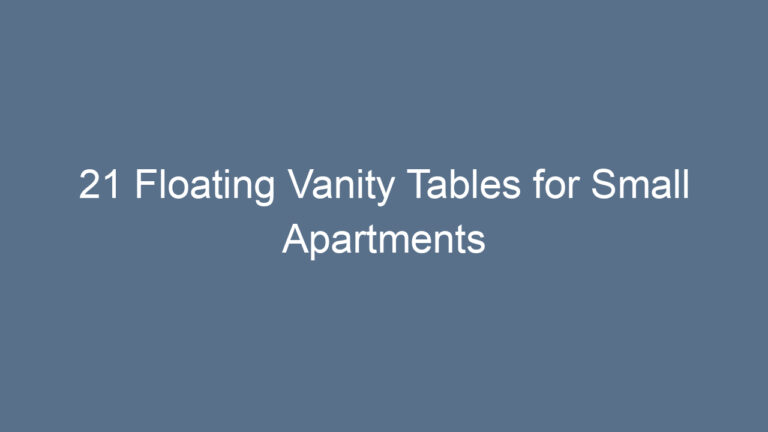19 Wildflower Garden Ideas for a Pollinator Haven

Creating a wildflower garden is one of the most rewarding ways to bring life, color, and energy into your outdoor space. Beyond the beauty, wildflowers serve a bigger purpose. They attract bees, butterflies, hummingbirds, and other pollinators that are essential for the health of our ecosystems. Imagine your backyard buzzing with life—petals swaying in the breeze, bees humming softly, and butterflies landing gracefully. It feels magical, doesn’t it?
In this guide, I’ll walk you through 19 wildflower garden ideas that not only look stunning but also create a true pollinator haven. Each idea blends beauty with purpose, making your garden both eye-catching and eco-friendly.
In This Article
- 1 1. Start with a Native Wildflower Mix
- 2 2. Create a Color Symphony with Blooms
- 3 3. Design Curvy Pathways through Blooms
- 4 4. Plant Tall and Short Flowers Together
- 5 5. Add a Water Source for Pollinators
- 6 6. Include Seasonal Blooms for Year-Round Beauty
- 7 7. Use Wildflower Borders for a Natural Frame
- 8 8. Welcome Night Pollinators with Evening Blooms
- 9 9. Mix Herbs with Wildflowers
- 10 10. Leave a Wild Patch Untouched
- 11 11. Incorporate Rock Gardens for Texture and Shelter
- 12 12. Plant in Clusters for Maximum Impact
- 13 13. Add Vertical Interest with Trellises and Vines
- 14 14. Use Companion Planting for Mutual Benefits
- 15 15. Add Pollinator Hotels for Extra Habitat
- 16 16. Include Fragrant Flowers to Attract More Visitors
- 17 17. Rotate Planting Spots Each Year
- 18 18. Integrate Edible Flowers for Beauty and Taste
- 19 19. Celebrate Imperfection and Let Nature Lead
1. Start with a Native Wildflower Mix
The first step to a thriving wildflower garden is choosing native wildflowers. These are the plants that naturally belong in your region. They’re already adapted to the soil, weather, and local pollinators. When you plant them, you’re giving bees and butterflies exactly what they’re searching for. I remember planting a small patch of native coneflowers and milkweed, and within weeks, monarch butterflies showed up like honored guests.
Why does this matter? Native flowers bloom at the right time, need less maintenance, and provide nectar that local species rely on. Instead of buying random seed packets, try sourcing a regional wildflower mix. This small decision makes your garden sustainable and full of life.
2. Create a Color Symphony with Blooms
Colors in a garden aren’t just for human enjoyment—they guide pollinators. Bees are naturally drawn to purple, blue, and yellow. Butterflies adore reds and oranges. By planting a mix of vibrant hues, you’re basically hanging out a neon “welcome” sign.
One summer, I scattered seeds of cosmos, black-eyed Susans, and coreopsis. The result looked like an impressionist painting—splashes of gold, red, and pink. It was breathtaking. But even better, the pollinators lined up like customers at a bakery. Mixing colors ensures there’s always something blooming and buzzing.
3. Design Curvy Pathways through Blooms
Straight lines feel too stiff for a wildflower garden. Curvy, winding pathways add charm and make your garden feel like a meadow in the countryside. Imagine strolling through a path where petals brush against your ankles, and butterflies flutter past your shoulder. That’s the magic of pathways.
Gravel, wood chips, or even stepping stones work beautifully. When you weave a path between flower beds, it also helps pollinators. They love open access to different flower clusters. Plus, you’ll have a cozy route for morning walks with your coffee in hand, soaking in nature’s orchestra.
4. Plant Tall and Short Flowers Together
Height creates drama in a garden. Tall flowers like hollyhocks or sunflowers stand proudly like guardians, while low-growing daisies or violets fill in the spaces below. This layered style mimics natural meadows and gives pollinators plenty of landing zones.
When I planted tall lupines behind low zinnias, it created a tiered effect that looked stunning from every angle. Birds perched on the tall stalks, while bees danced around the lower blooms. Think of it as designing a concert stage where every flower has a role, from background singer to lead star.
5. Add a Water Source for Pollinators
Pollinators don’t just need nectar—they need water too. A shallow birdbath, a tiny fountain, or even a clay saucer with pebbles can be a lifesaver. Bees land on the stones to sip safely without drowning.
Last summer, I set a small dish among my marigolds, filled with rainwater and a few flat stones. To my surprise, it became a buzzing hotspot. Watching bees delicately land and drink felt like hosting a secret café for nature. Adding water makes your wildflower garden more than pretty—it makes it practical.
6. Include Seasonal Blooms for Year-Round Beauty
A garden that blooms in all seasons keeps pollinators fed and your space lively year-round. Spring might start with bluebells, summer shines with sunflowers, and autumn glows with asters. Even in winter, dried seed heads can feed birds and provide shelter.
I once made the mistake of planting only summer bloomers. By fall, the bees disappeared, and the garden looked sad. Now, I stagger my choices—early bloomers, midsummer stars, and late-season survivors. This balance ensures the buzz never dies down.
Here’s a quick table for inspiration:
| Season | Wildflowers to Plant | Pollinators Attracted |
|---|---|---|
| Spring | Bluebells, Columbine | Bees, hummingbirds |
| Summer | Sunflowers, Cosmos, Coneflower | Bees, butterflies |
| Autumn | Asters, Goldenrod, Joe-Pye Weed | Bees, migrating monarchs |
| Winter | Dried Echinacea, Seed Pods | Birds |
7. Use Wildflower Borders for a Natural Frame
Borders do more than define your space—they create a stage. Planting wildflowers along fences, walkways, or even the edge of your lawn makes the area feel intentional yet free-spirited. It’s like putting a rustic frame around a vibrant painting.
In my own yard, I lined the edge of my vegetable patch with calendula and nasturtiums. They not only brought bees closer but also looked like a cheerful curtain of color. Borders guide the eye, give structure, and turn your garden into a lively tapestry.
8. Welcome Night Pollinators with Evening Blooms
Not all pollinators work in daylight. Moths and bats come alive at night, and they love pale or fragrant flowers like moonflowers or evening primrose. Adding them ensures your wildflower garden hums with life even when the sun goes down.
One evening, I stepped outside, and the garden was glowing—white blossoms lit by moonlight, moths hovering like tiny lanterns. It felt otherworldly. Night-blooming flowers don’t just attract pollinators—they add a dreamy, romantic vibe to your space.
9. Mix Herbs with Wildflowers
Herbs like lavender, thyme, and basil aren’t just kitchen treasures—they’re pollinator magnets. Mixing them into your wildflower garden gives you beauty, fragrance, and practical harvests. Bees especially adore lavender, while butterflies can’t resist flowering thyme.
Last year, I planted lavender rows among my wildflowers, and the effect was magical. The purple spikes blended with daisies, and the scent filled the air. Plus, I had fresh herbs for tea and cooking. It’s a win-win setup that connects gardening with daily life.
10. Leave a Wild Patch Untouched
Sometimes the best thing you can do for pollinators is… nothing. Leaving a patch of grass or soil untouched allows wildflowers to grow naturally. Dandelions, clovers, and other so-called “weeds” are actually lifelines for pollinators.
In one corner of my garden, I let nature take control. Within weeks, clover carpets and tiny violets appeared. It looked simple but became one of the busiest areas for bees. Sometimes imperfection is perfection, and that’s the soul of a true wildflower garden.
11. Incorporate Rock Gardens for Texture and Shelter
Adding rocks isn’t just for decoration—they provide shelter for pollinators and create interesting textures. Bumblebees love nesting under stones, and butterflies rest on sun-warmed rocks. A rock garden also breaks the monotony of greenery, offering visual contrast that highlights your wildflowers.
I built a small rock mound in the corner of my garden with creeping phlox and stonecrop between the gaps. The bees immediately found it a cozy resting spot, and the varied heights made the garden feel layered and alive. Rocks and flowers together create a micro-habitat that supports pollinators while enhancing the aesthetic appeal.
12. Plant in Clusters for Maximum Impact
Pollinators are drawn to clumps of the same flower rather than single blooms scattered around. Clustering creates a visual signal that’s easy for bees, butterflies, and hummingbirds to detect.
I remember planting a dozen purple coneflowers in one area, and the pollinator traffic exploded. Clusters make nectar gathering efficient for insects, meaning they spend more time in your garden and less energy searching for food elsewhere. Think of it as setting up a buffet: the more options together, the happier your guests.
13. Add Vertical Interest with Trellises and Vines
Vines and climbing plants bring vertical drama and additional nectar sources. Clematis, sweet peas, and morning glories climb trellises, fences, or arbors, creating layers for pollinators to explore.
When I added a trellis with morning glories at the back of my garden, butterflies and bees loved the extra height. It also framed the garden beautifully, making it feel like a secret hideaway. Vertical gardening maximizes space, provides shade, and makes your wildflower garden more three-dimensional.
14. Use Companion Planting for Mutual Benefits
Pairing wildflowers with vegetables or fruits isn’t just smart—it’s magical. Marigolds, nasturtiums, and sunflowers naturally repel pests while attracting pollinators that benefit nearby crops.
In my own garden, I planted nasturtiums around tomatoes. Not only did pollinators visit the flowers, but the tomatoes produced more fruit with fewer pests. Companion planting turns your garden into a living ecosystem, where plants and pollinators coexist and support each other. It’s a method both practical and enchanting.
15. Add Pollinator Hotels for Extra Habitat
Pollinators need homes too! Bee hotels provide safe nesting spaces for solitary bees and other insects. They’re easy to make with bamboo tubes, drilled wood blocks, or small crates.
I made a simple bee hotel last spring and placed it near a patch of sunflowers. Almost immediately, solitary bees began inspecting the holes, and some even nested. Bee hotels don’t just help pollinators survive—they also bring a lively charm to your garden, making it feel like a community buzzing with life.
16. Include Fragrant Flowers to Attract More Visitors
Scent is powerful. Many pollinators are guided by smell rather than sight. Sweet-scented flowers like honeysuckle, lavender, and phlox act as natural lures.
Planting fragrant blooms near pathways or seating areas enhances both the sensory experience for humans and pollinators. One summer, I sat near a lavender patch at dusk, and the air was filled with scent and movement. Bees, butterflies, and even hummingbirds found it irresistible. Fragrance is nature’s invitation that no pollinator can ignore.
17. Rotate Planting Spots Each Year
Rotating your wildflower patches keeps the soil healthy and prevents pests from taking over. It also encourages diversity in pollinator visits. Some flowers thrive in new soil conditions, attracting different species each season.
I rotate my sunflowers and coneflowers between areas each year. Not only does it rejuvenate the soil, but it also keeps the garden dynamic. Pollinators are curious creatures, and a rotated garden feels like a new adventure every season.
18. Integrate Edible Flowers for Beauty and Taste
Wildflowers like nasturtiums, calendula, and borage are edible. They add beauty, attract pollinators, and make your garden a culinary delight. Salads, teas, and desserts suddenly become a visual feast.
I often pick a few petals of borage or calendula to sprinkle over salads. Watching pollinators enjoy the same flowers is a special connection between gardening and dining. Edible wildflowers turn your garden into a space that feeds both body and soul.
19. Celebrate Imperfection and Let Nature Lead
Finally, the best advice for a pollinator haven? Embrace imperfection. Wildflowers are naturally untamed. Let them spread, self-seed, and interact freely. Pollinators thrive in gardens that feel alive and organic.
I’ve learned to let daisies wander where they want and sunflowers lean without restriction. The result? A wild, buzzing paradise that feels authentic and vibrant. Sometimes, giving up control is the secret to creating a garden that truly comes alive.
Final Thoughts
Creating a wildflower garden for pollinators isn’t just about aesthetics. It’s about building a miniature ecosystem that supports life, fosters biodiversity, and connects you with nature. By mixing native plants, layering blooms, providing water and shelter, and embracing imperfection, your garden transforms into a sanctuary.
Remember, each flower, each cluster, and each scent matters. Your backyard can become a lively pollinator haven where color, movement, and life coexist. So grab some seeds, plant with intention, and watch nature’s orchestra unfold right outside your door.






